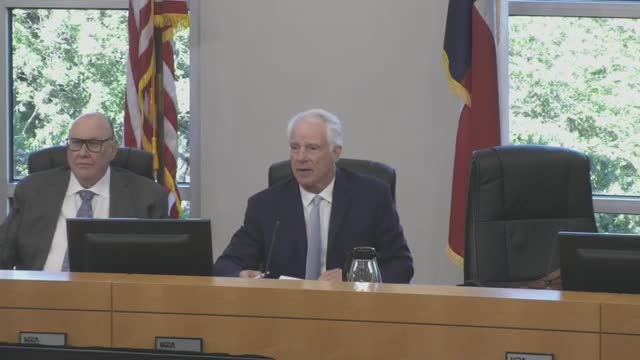LCRA invests quarter billion to secure aging dam infrastructure
August 23, 2024 | Lower Colorado River Authority (LCRA), Departments and Agencies, Executive, Texas
This article was created by AI summarizing key points discussed. AI makes mistakes, so for full details and context, please refer to the video of the full meeting. Please report any errors so we can fix them. Report an error »

In a recent meeting of the Lower Colorado River Authority (LCRA) Board of Directors, significant discussions centered around the ongoing maintenance and repair of aging dam infrastructure, with a focus on enhancing safety and longevity. Board members expressed concerns about the current state of the dams, some of which are nearly 90 years old, and the potential risks posed by deteriorating concrete and rebar.
The board revealed that the existing repair contract is expected to extend for over a decade, prompting the decision to engage a second contractor to expedite repairs. This dual approach aims to address spalling issues—where corrosion of steel reinforcement bars leads to concrete deterioration—before they escalate into more severe structural problems. The board emphasized the importance of maintaining the dams not only for water supply but also for critical flood control measures.
Experts at the meeting explained the complexities of the repair process, which involves using advanced techniques to identify and address areas of concern within the concrete. This includes the installation of sensors and sacrificial anodes designed to mitigate corrosion, ensuring the structural integrity of the dams for another century.
The board also acknowledged the financial implications of these repairs, with an estimated investment of a quarter of a billion dollars over the next five years. This funding is essential for maintaining the safety and functionality of the infrastructure, especially in light of recent dam failures across the country, such as the Oroville Dam incident and a coastal building collapse in Florida attributed to saltwater corrosion.
In addition to infrastructure discussions, the board conducted a performance evaluation of General Manager Phil Wilson, approving his fiscal year 2024 evaluation and setting performance goals for the upcoming year. The meeting concluded with a commitment to continue prioritizing the safety and resilience of the LCRA's dam infrastructure.
The board revealed that the existing repair contract is expected to extend for over a decade, prompting the decision to engage a second contractor to expedite repairs. This dual approach aims to address spalling issues—where corrosion of steel reinforcement bars leads to concrete deterioration—before they escalate into more severe structural problems. The board emphasized the importance of maintaining the dams not only for water supply but also for critical flood control measures.
Experts at the meeting explained the complexities of the repair process, which involves using advanced techniques to identify and address areas of concern within the concrete. This includes the installation of sensors and sacrificial anodes designed to mitigate corrosion, ensuring the structural integrity of the dams for another century.
The board also acknowledged the financial implications of these repairs, with an estimated investment of a quarter of a billion dollars over the next five years. This funding is essential for maintaining the safety and functionality of the infrastructure, especially in light of recent dam failures across the country, such as the Oroville Dam incident and a coastal building collapse in Florida attributed to saltwater corrosion.
In addition to infrastructure discussions, the board conducted a performance evaluation of General Manager Phil Wilson, approving his fiscal year 2024 evaluation and setting performance goals for the upcoming year. The meeting concluded with a commitment to continue prioritizing the safety and resilience of the LCRA's dam infrastructure.
View full meeting
This article is based on a recent meeting—watch the full video and explore the complete transcript for deeper insights into the discussion.
View full meeting
